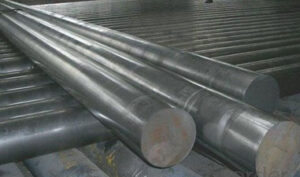In the realm of metallurgy and materials engineering, few substances boast the reputation held by stainless steel. Renowned for its resilience, resistance to corrosion, and versatility, stainless steel is a stalwart in industries ranging from construction to medicine. Among the diverse array of stainless steel alloys, the 316 stainless steel round bar shines as a beacon of durability and resistance to corrosion. This in-depth exploration into the world of 316 stainless steel round bars will elucidate their unique properties and multifarious applications, with a keen focus on corrosion resistance and overall durability.
Understanding 316 Stainless Steel
What Sets 316 Stainless Steel Apart?
At its core, 316 stainless steel is classified as an austenitic stainless steel alloy. Its composition is a closely guarded secret to its exceptional properties, featuring 16-18% chromium, 10-14% nickel, 2-3% molybdenum, and a dash of various trace elements. This seemingly simple formula results in a material that stands tall in the face of corrosion and environmental stressors.
Unveiling the Key Properties
1. Superlative Corrosion Resistance
The preeminent characteristic of 316 stainless steel is its unparalleled corrosion resistance. This property positions it as the go-to choice for applications submerged in moisture or exposed to harsh chemicals. Industries such as marine and chemical processing find solace in its unwavering durability.
2. Resilience in the Face of High Temperatures
316 stainless steel boasts an uncanny ability to retain its structural integrity and corrosion resistance even in the scorching crucible of elevated temperatures. Consequently, it is an indispensable component in industrial furnaces and high-temperature exhaust systems.
3. The Pillar of Strength and Durability
With a high tensile strength and exceptional toughness, 316 stainless steel is an embodiment of durability. It thrives under heavy loads and endures the harshest conditions, rendering it invaluable in structural and construction applications.
4. The Art of Fabrication
Versatility reigns supreme with 316 stainless steel. This alloy can be effortlessly manipulated through various fabrication techniques, including welding and forming, further solidifying its standing in diverse industries.
Applications Unveiled
Construction and Architecture: Aesthetic and Durable
316 stainless steel round bars find their home in the domains of construction and architecture, serving as the backbone for structural components, handrails, and ornamental embellishments. Its marriage of strength, resistance to corrosion, and aesthetic appeal makes it a darling of both indoor and outdoor projects.
The Marine Marvel
True to its moniker, marine-grade stainless steel is the unsung hero of shipbuilding and maritime ventures. It takes center stage in crafting boat fittings, marine hardware, and equipment thrust into the unrelenting embrace of saltwater and the briny sea breeze.
Championing the Chemical Realm
In chemical processing plants and laboratories, 316 stainless steel reigns supreme. It takes the form of tanks, pipes, valves, and pumps that must confront the corrosive agents and acids of the chemical world head-on.
The Food and Beverage Connoisseur
316 stainless steel is celebrated as a food-grade material, making it an indispensable ingredient in the recipe for safe food processing equipment. It stands strong in tanks, conveyors, and storage containers, ensuring the purity of consumables.
A Pillar of Purity in Pharmaceuticals
In the pharmaceutical industry, cleanliness is paramount. 316 stainless steel finds its place in the construction of pharmaceutical reactors, storage vessels, and piping systems where product purity is non-negotiable.
Revving Up in Automotive and Aerospace
The automotive and aerospace sectors rely on the lightweight yet robust nature of 316 stainless steel. It weaves its magic in exhaust systems, aircraft components, and various engine parts.
Medical Instruments and Beyond
The medical world entrusts 316 stainless steel with its instruments and devices. This alloy, with its biocompatibility and corrosion resistance, is the bedrock of surgical instruments, orthopedic implants, and dental tools.
Taming the Oil and Gas Frontier
The oil and gas industry relies heavily on 316 stainless steel in the creation of downhole equipment, pipelines, and offshore platforms. Its resistance to corrosion in harsh environments is the linchpin of its success in this arena.
Frequently Asked Questions (FAQ)
1. Does 316 stainless steel exhibit magnetic properties?
No, 316 stainless steel is typically non-magnetic due to its austenitic crystalline structure, setting it apart from the magnetic attributes of ferritic or martensitic stainless steel.
2. How does 316 stainless steel compare to 304 stainless steel?
Both 316 and 304 stainless steel fall within the austenitic alloy family, but 316’s addition of molybdenum elevates its corrosion resistance. Thus, 316 finds favor in marine and chemical environments, while 304 is suitable for applications where corrosion resistance is less critical.
3. Can 316 stainless steel withstand outdoor exposure?
Certainly, 316 stainless steel thrives in outdoor applications. Its corrosion resistance, even in saltwater environments, makes it an ideal choice for structures, handrails, and decorative elements exposed to the elements.
4. What distinguishes 316 stainless steel from its low-carbon counterpart, 316L?
316L stainless steel is a low-carbon variant of 316, offering even better corrosion resistance in applications involving welding. It is often preferred when welding is a necessity to prevent carbide precipitation and subsequent corrosion.
In summation, the 316 stainless steel round bar is a resilient and versatile material that caters to a vast spectrum of applications across diverse industries. Its exceptional properties, from corrosion resistance to strength and ease of fabrication, solidify its status as a foundational material where longevity and reliability are non-negotiable. Whether shaping the future of marine engineering, construction, or pharmaceutical advancements, the 316 stainless steel round bar remains an unyielding testament to human innovation and engineering prowess.


